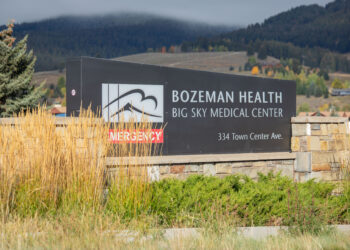Legislation would fix transportation district issue, allow for greater reach on city bus routes
By Jordan Hansen DAILY MONTANAN
Update: House Bill 764 has been signed into law.
Right now, the City of Billings MET Transit buses can’t serve nearby Lockwood because of a 1973 law.
Legislation awaiting a decision by Gov. Greg Gianforte would change that, as well as an issue regarding transportation districts highlighted during the past few years in Bozeman. If signed, House Bill 764 would make changes to Montana’s urban transportation districts and bus systems.
Under current law, transit systems owned by a municipality can’t serve communities outside the city limits. Legislators also used the bill as an opportunity to revisit laws surrounding urban transportation districts.
The new law would open up cities with larger transportation systems — like Billings — to expand their reach outside town. Rusty Logan, an assistant director with the City of Billings who leads MET Transit, said the legislation could potentially lead to new routes.
“It allows the city to more openly negotiate inter-local agreements to provide regional transit service,” said Logan, who is also the president of the Montana Transit Association. “As far as the urban transportation districts goes, the intention of the bill was to make it easier to establish an urban transportation district; and in saying ‘easier,’ just easier to get the vote on the ballot so that the voters could decide.”
Currently, municipal bus routes can’t go further than eight miles from city limits. The bill adds language allowing municipalities to exceed that mileage if funded by another state, federal or non-profit source.
The bill was brought by Rep. Brian Close, a Bozeman Democrat, whose community was part of the reason the legislation was brought in the first place.
“It’s been 50 years since you looked at these statutes,” Close said during a House hearing on the bill on March 4. “And I think the statutes need just a small amount of reform.”
The 2020 census put the Bozeman population at more than 50,000 people, an important milestone as they were now federally required to create a Metropolitan Planning Organization. It also opens up the city for increased federal funding, including for transportation.
While the Bozeman area already had some transit services run by a non-profit, a new funding structure had to be created in order to continue receiving federal funding.
Gallatin Valley Urban Transportation District was formed in the wake of the changes to Bozeman’s population. Creation of the district required 20% of all registered voters in the boundaries of the proposed district to sign a petition to get it on the ballot. It was a drawn out process, said Sunshine Ross, who is the transit director at Gallatin Valley Urban Transportation District.
“A lot of effort, a lot of time, but it really did pay off,” Ross said.
Gallatin County voters approved the district, with 79% voting yes. HB 764 will simplify the process by allowing a county commission to put creation of a transportation district directly on the ballot.
“It eliminates this really onerous threshold,” said Jordan Hess, who is the CEO of Mountain Line and a former city council member in Missoula.
Gallatin Valley was the fifth transportation district in the state, which includes larger cities like Missoula and smaller ones like Glendive, which is served by Dawson Urban Transit.
The bill also gave a clear definition of “direct transportation service,” saying it was 1.5 miles from the nearest route used by “a vehicle that provides general or special service to the public on a regular and continuing basis.”
Clarity was needed in cases where a property owner wanted to get out of the boundaries of the transportation district, which can be used to generate funding through taxes.
“Our board has had to essentially define the term in statute by policy, since it is not defined in statute,” Hess said. “We’re happy to be in a situation. We’re happy to be in an environment where that’s clarified and we’re not having to interpret unclear statutes.”














